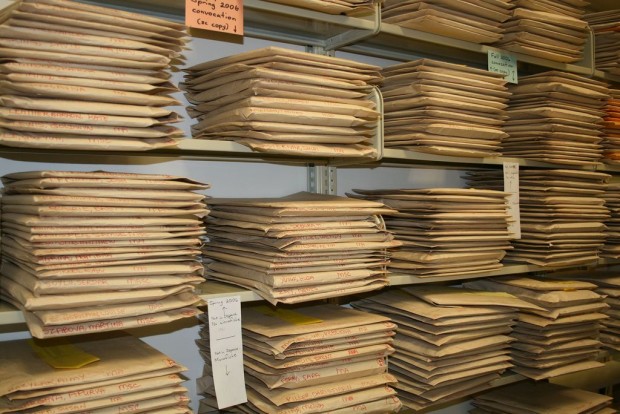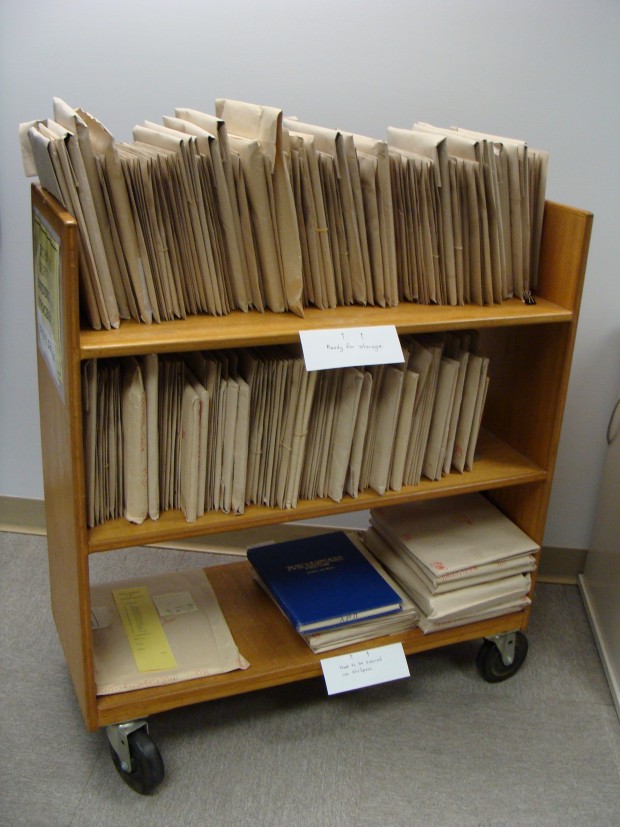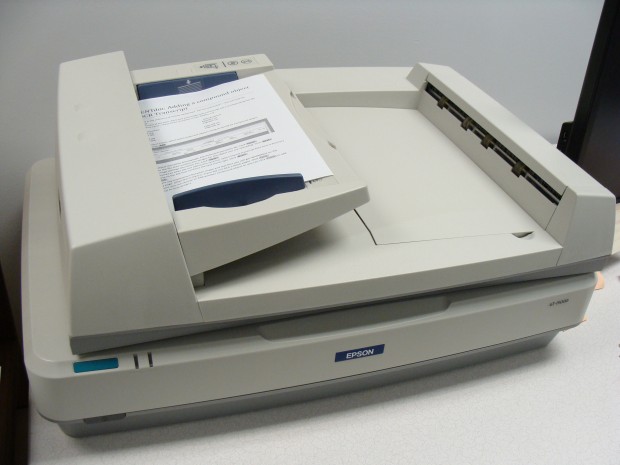One of our bigger projects was the conversion of hundreds of Graduate and Doctoral theses and dissertations. For many years there were strict requirements for how the printed manuscript could be submitted, from the type of paper to the method of attaching images. Gradually, as technology changed, students were given more options, including electronic submission. In 2011, Graduate Studies made it mandatory to submit electronically.

Prior to that change, the Libraries had already decided to start digitally converting those that had been submitted in hard copy during the years when students had an either/or option. We did many of these in-house (I have personally scanned over 150) but we subcontracted a large portion to another institution.

Since the manuscripts are generally submitted single-sided and unbound, we used a document feeder on an Epson flatbed scanner. It was our workhorse, accepting 100 pages at a time. We saved them directly to PDF format, merging successive files for longer manuscripts.

After they were scanned, we had to ensure that any signatures were removed since these would be available openly for download. To do that, we would extract the signature page(s) from the PDF as an image file then open the file in Photoshop and digitally remove the signatures then re-insert the page in the PDF. We also ran the abstract through OCR — optical character recognition — which makes the image “readable” and allows cataloguing staff to copy and paste the abstract into the description online.
We still get requests for older theses to be digitized. Generally these are bound copies from our circulating collection; we scan these on a book scanner (the glass goes right to the edge allowing us to capture more of the page), follow the same process of removing the signatures, and upload them to our institutional repository — after we have permission from the author. (Permission can sometimes play a very significant role in mounting a collection, but I will leave that for a future post.)
You can find our theses and dissertations on UVicSpace, our institutional repository, and in the library catalog. On UVicSpace you can browse by school or department as well as search the whole collection.
